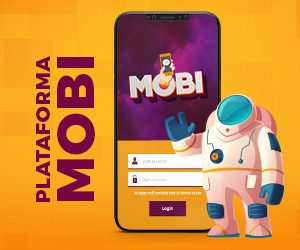Tuesday, July 18th was the date I faced the I Workshop Project Canvas, held by José Finocchio Jr. at the SENAC Santo Amaro premisses.
Veronica Bilyk
As an MBA student for Project Management at FGV – that bases its curriculum on the PMBOK guidelines and also having been myself originated from the spectrum of Advertising and Communications, a field that still makes little use of project management techniques – at least until now; at least in this country – I have na increasing need to crystallize concepts and do my own benchmarking over the several project management methods available.
Signing up for the Workshop would not only address the need of getting to know yet another methodolgy but also increase my Professional network in a field that technically is still new to me.
Without any knid of hesitation, first thing I’d like to say is that it was absolutely worthwhile and that I would recommend attending a similar Workshop to anybody in the workforce.
Project Canvas is a method that takes ownership of the classical concepts of project management and places them in an updated, intuitive and synthetic format without being superficial. Highly visual, the entire project planning is visualized on a A1 sheet only.
With the use of post-its to fill-in the designated spaces, ideas can be launched and discarded in a more dynamic and less bureaucratic manner.
When learning how to use the Canvas method nothing could be better than attending a workshop . A theoretical lecture would not do the trick. Finocchio’s teaching is accessible and humorous. Not only does he master and rely on the tool, but he also has a very good grasp of group dynamics that maximize the filling of the Canvas’ fields and as a consequence, enhances the design of any project.
Project Canvas’ mission (reminding ourselves that the word ‘canvas’ represents the painters working area) is to approach the Project Manager’s task (planning) to the current reality and speed of the business world.
The more academic theories and techniques are far from the businesses and organizations’s true needs in terms of decision agility. They have been based largely on military strategies and fall short, on what concerns business application because they do not reflect the dynamics of organizations in the contemporary world. Project Canvas obeys the logic of the mind, transposing a map whose role in visualization and flow was guided by concepts of neuroscience that sustains that we are, us humans, more visual than verbal.
Como autores nessa área, Prof. Finocchio ressaltou Desenhando Negócios: Como Desenvolver Idéias Com o Pensamento Visual e Vencer os Negócios, Dan Roam e Business Model Generation – Inovação em Modelos de Negócios, Alexander Osterwalder. Leituras importantes para se obter um conhecimento mais robusto sobre os pensamentos que estão por trás do Canvas.
While mentioning authors in this area, Prof.. Finocchio, brought up: Designing Business: Developing Ideas With Visual Thinking and Overcoming the Business by Dan Roam and Business Model Generation – Innovation in Business Models by Alexander Osterwalder – important literature for those who wish to obtain a more robust knowledge surrounding the ideas behind the Canvas.
The classical knowledge and academic concepts of scope, objectives, assumptions, constraints, stakeholders, costs and schedule are required to provide safety in the development of this new format, but there is a huge decrease in written material which makes the understanding of the project much easier. The way to assemble a Project Canvas sheet over a particular project allows for the participation of a diverse team of people: representatives from the Client and from the consultancy (or not, if there is internal domain of the tool), and the result of a planning meeting (or several) can be displayed on a single A1 sheet.
A contribuição dos participantes se revela através dos pontos escritos em post-it que são afixados dentro das áreas respectivas: Por quê?, O quê?, Quem?, Como?, Quando e Quanto?
The participants’ contribution is revealed through the points written on post-its that are placed within the respective areas: Why?, What?, Who?, How?, When and How?
• Why? Justications, Objectives and Benefits
• What? Product and Requirement
• Who? Stakeholders and Team
• How? Constraints, Assumptions and Deliveries
• When and How? Risks Timeline Costs
Se muito já havia me agradado na realização de um projeto pelo método Canvas, aquilo que mais despontou, talvez até como uma ‘iluminação’, foi a forma de se realizar e visualizar a Integração.
If I had already been pleased by the Project Canvas method, what emerged as most interesting in my opinion- perhaps even as an ‘enlightenment’ – was its way to carry and view Integration.
The proof of the nines on Canvas, Integration, once again is simple and visual. Arrows drawn by the planning team, integrate all the data placed on the sheet, allowing the the plan review and making sure that the variables have interdependence and none remains without a designated responsible.
Para um aluno de MBA esse passo fecha com chave de ouro o Workshop. Fica aqui minha sugestão que os cursos realizem uma apresentação dessa ferramenta ao final dos nossos dois anos de estudo. Consolida e sacramenta. Muitas coisas passam a fazer melhor e maior sentido.
For an MBA student this step closes the Workshop on a high key. Here lies my suggestion that all courses perform a presentation of this tool at the end of our two years of study. A lot of issues make much better sense.
Mr. Finnochio also emphasized the simplicity to archive projects for future reference and also gave an explanation on how to accomplish the Portfolio management through Canvas; however this task, I shall leave as a duty to his workshops. The time schedule at the end was gone and my skills are limited to the planning area. I prefer not to risk trying to deliver this part of the acquired knowledge.
Keep an eye on upcoming course dates. Absolutely worthwile.









Excellent web site you’ve got here.. It’s hard to find high-quality writing like yours these days.
I really appreciate people like you! Take care!!